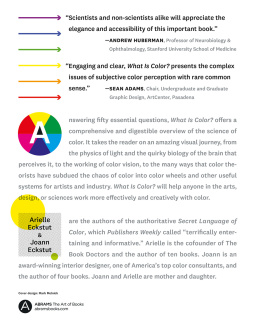Table of Contents
FOREWORD
I first met Joel Silverman on the set of our TV show Drs. Foster and Smith Faithful Friends. Joel was one of the expert guests we had invited to be on the show to demonstrate dog-training techniques. Joels way with animals and his explanations immediately attracted my attention. I liked his approach.
As a veterinarian and an animal lover, I have always owned and trained dogs. And for nearly three decades, Ive helped organize seminars to help others learn how to train mans best friend to do his tasks well while enjoying them, too. That was why I was immediately attracted to Joels way around his dogs. His dogs were obedient, yes, but it was clear that they were obedient because they wanted to be. They were having fun with Joel! That is how it is supposed to work. The relationship between a dog and his owner can and should be a fun one, where each knows his role and enjoys it.
Not every dog owner has that experience, however. Just like people, dogs have different personalities. Working in veterinary medicine all of my adult life allowed me to see those personality differences firsthand. If a dog owner doesnt understand a dogs personality and how that particular dog learns best, the result is all too often an unhappy owner and an unhappy dog. Joels system of identifying a dogs personality by answering the question What color is your dog? is a great leap forward in helping dogs and their owners develop great relationshipsand in helping dog owners train their faithful friends in the way in which they will learn best.
Joel first described this system to me while we were shooting the second season of Faithful Friends. As I heard him describe the concept of What Color Is Your Dog? I was immediately intrigued and asked about reading the book. Im glad I did. Youll be glad you read this book, too.
In What Color Is Your Dog? Joel outlines for you how to easily identify your dogs personality type using five different categories, each assigned a different color. Characteristics of each color category are explained, along with training techniques and how various tools are used for each one. In each color category he explains how to teach the basic commands come, sit, stay, and no. Tips are provided so you as a trainer will know how to respond to your dogs personality and reactions.
Joels system makes training so simple that even an old vet like me could do it! I wish I had recognized this method forty years ago!
Get ready for a great read, and a great time with your faithful friend as a result.
Dr. Marty Smith
Drs. Foster and Smith Pet Supplies
INTRODUCTION
One of the biggest mistakes that a dog owner or a trainer can make is to think that all dogs should be trained in exactly the same way, using the same technique. Why? Because dogs are individuals, each with his own fascinating and definitive personality. Some are the fiery sort, easily sent into a barking, tail-wagging frenzy. Others possess a mellower dispositionlaidback and ready to go with your flow. Then there are the shy ones, the timid ones, the closet refugees. The training techniques that work fine with a shy dog (what I call a Blue dog), that help him build confidence and energize him, can fail miserably with a fiery dog (a Red dog), stirring him up and making him harder to control. That is hardly surprising when you consider the real difference in the dogs personalities.
It is essential that new dog owners and trainers take the opportunity to get to know their dogs, understand what types of dogs they are dealing with, and train their dogs based on those personalities. I hope to help you do just that with What Color Is Your Dog? In this book, I have divided dogs personalities into five general groups: Red, Orange, Yellow, Green, and Blue. My training suggestions correspond to each color, as each one has its own unique styles, techniques, and methods.
Before I explain my system further, I want to emphasize again that if you have not done so already, you must take time, before training begins, to develop a relationship with your dog. You must know the animal you are working with before you can effectively teach him. Many dog owners have made the mistake of taking a dog straight from an animal shelter, humane society, or breeder into training, without bonding with him first. When this occurs, the animal is often forced into an uncomfortable, even frightening, situation. Depending on the animals personality, the outcome can be disastrous. A shy or timid dog can become afraid and possibly turn into a fear biter. A slightly aggressive dog can become truly aggressive. Unfortunately, too many dogs get returned to breeders, shelters, and rescue societies because their owners have decided they are untrainablewhen in reality the fault lies with the people, who did not bond with their pets and learn about their personalities before trying to train them. The best animal trainers I have ever been around were the ones who got to know the animal they were training, became the animals friend, and built trust.
For the past thirty years, Ive been teaching people about dog training and responsible pet ownership, all the while looking for new ways to make the training and care of a dog easier and more enjoyable for the average owner. In examining the techniques Ive used and messages Ive delivered, I find that the two points I outlined above stand out: one, that people need to develop relationships with their dogs before training them; and two, that dogs, like people, have a wide variety of personalities and should be trained accordingly.
In What Color Is Your Dog? youll find training suggestions geared specifically to the personality of your dog. So to use the book, youll first need to determine the color of your dog. Is he an extremely high-strung Red? Or just a slightly jumpy Orange? Could he be a middle-of-the-road, changeable Yellow? Or is he a somewhat shy and withdrawn Green? Then again, perhaps he is an incredibly intimidated and fearful Blue? (These, of course, are only a few of the ways to describe the dogs that fall into the five personality groups. You will find more in-depth descriptions in chapter 1.)
It is important to understand that these color designations are based on a dogs personality. I want to emphasize that point because a colleague recently drew my attention to a very different color system. In a 1997 article in Off-Lead Magazine, The Color of Dog Training, Colleen McDaniel discussed the dogs as well as the owners constantly changing states of mind, which she said could run the gamut from blue to red (calm state to excited state) in a single daylike a mood ring! My color concept is based in the dogs actual temperament, not a passing mood.
Once you identify the color of your dog, you can go to the corresponding chapter for the appropriate teaching style. I will help you teach your dog three new behaviorssit, stay, comeand the word no, which I believe are essential for all dogs to know and understand.
Your dog needs to know how to sit and stay because if you have the front door opened, you must be confident that your dog will sit and stay there, not run out. It is an excellent, essential, and easy form of control and communication for all dog owners. Your dog needs to know how to











